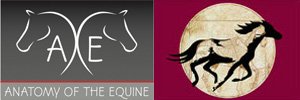| Back to Back Issues Page |
 |
|
Anatomy of the Equine News, Issue #006 -- July 2016 July 31, 2016 |
| Dear Helping Horses Thrive
Anatomy? Honestly, anatomy can be one of the least exciting aspects of working with horses until there is a problem. Suddenly, knowing what lies beneath the skin has more significance. Jenny and I know that What are we thinking when we put together our images? laminitis verses healthy picture and how I use it to educate my clients.
Jenny and I have now worked as a team for over three years. What drew us together is our commitment to helping horses thrive. With our combined skills, we strive to help by creating communication tools.
Clinics Focused on the Farrier community. Safely explore with no agenda supplements education from various sources, books, schools etc supports hands on learning comparative anatomy is the bomb! helps fill in mechanical understanding
Adding a new group New Tendons & LigamentsPosters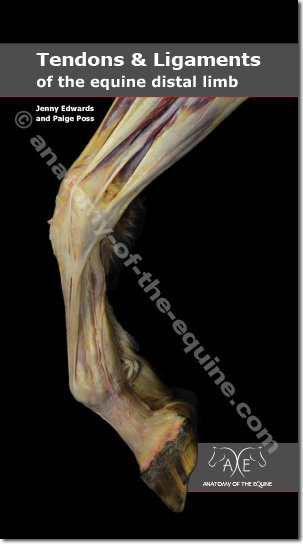 Once again, we have used high quality, full color, anatomy postcards to create a fantastic teaching tool for vets, farriers, trimmers and body workers. However, this time we opted for the jumbo (6"x11") size to give space for more detail.
Once again, we have used high quality, full color, anatomy postcards to create a fantastic teaching tool for vets, farriers, trimmers and body workers. However, this time we opted for the jumbo (6"x11") size to give space for more detail.
This is an in-depth guide to the equine distal limb. The images have been carefully collected to visibly show the function of the structures and ease the task of explaining difficult concepts. At both the International Hoof Care Summit and American Farriers Association Annual Conference there was a lot of excitement over this handy guide. Everyone was thrilled that the material was advanced enough to be a good study guide, yet simple enough to be used to educate clients. This excellent photographic guide is available in both a printed version and as a digital download (eBook).
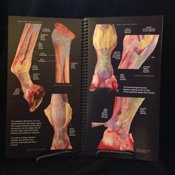 Preview the images on our website.
Preview the images on our website.
We have included a brief description of each and every page. https://www.anatomy-of-the-equine.com/equine-distal-limb.html Distal Limb Pocket Guide -UpdatedJenny and I have worked very hard to make our Pocket Guide a must have resource. We added two new informative pages and re-worked the layout to make it an even better teaching guide.
Exploring Laminitis 1 - New Printed Version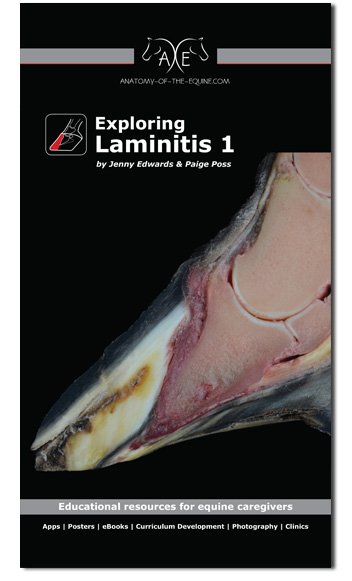 We have taken our excellent photographic book and printed it on the jumbo postcards. The images are crystal clear and carefully organized to show the devastating effects that can occur with chronic laminitis.
We have taken our excellent photographic book and printed it on the jumbo postcards. The images are crystal clear and carefully organized to show the devastating effects that can occur with chronic laminitis.
Images compare external, radiographic and internal dissection views of normal and chronically laminitic feet - there is so much that can be learned from these photographs. Our intention is to help those that deal with laminitis. I have personally found these images to be helpful when speaking to owners of laminitic horses. It is important to convey the complexity of laminitis. As a farrier, I may be dealing with unknown damage. Results may be slow or minimal and these images help the owner understand the challenges I may be up against.
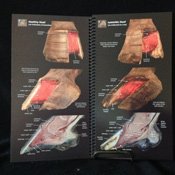 The side-by-side comparisons and the unique presentations of the hooves, allows for a deeper understanding of the mechanics.
The side-by-side comparisons and the unique presentations of the hooves, allows for a deeper understanding of the mechanics.
The images are excellent for study. They will answer some questions and and create more! Jenny and I look forward to creating more books highlighting the various distortions of laminitic hooves. https://www.anatomy-of-the-equine.com/exploring-laminitis.html Dissection Clinics - Whole Horse and Hoof
In March, Paige co-hosted a Whole Horse Dissection with Ann-Marie Hancock, DVM, EDO at Rectortown Equine Clinic. The clinic was geared towards equine professionals wanting a refresher on anatomy and a chance to explore areas of interests. Not your typical dissection. Our clinics are not just a name game. While nomenclature is important, we emphasize movement and function. Paige's technical skills at dissecting tissues cleanly and neatly paired with Ann-Marie's knowledge of anatomy leads to an exciting way to learn. For example, naming the flexors and adductors of the hind limb is one thing, but truly understanding how they are influenced by the abdominal musculature; nerve innervation; pelvic and spinal posture and organ mobility; as well as how they influence the rotation and range of motion of the stifle and hock, is the key to appreciating functional anatomy.
Here is what one participant had to say: I'm still amazed. Every textbook of equine anatomy has come to life since the Dissection Weekend. The creativity in your approach allowed for answers to both the anatomical and biomechanical questions that I've carried with me from barn to barn for the past 4 years. Thank you so much for being innovators in this underutilized field, I learned more in one weekend than I could have ever imagined. I will definitely be signing up for another. Thanks again, Andy Smith, DC, Equine A.R.T. practitioner If you missed this one, we are scheduling another in late Oct. 2015. Check the website for more information and a detailed description of the format.
Please let us know what you think about our current products and also if there are any projects you would like to see us cover in the future. Our driving aim is to produce high quality, useful material that helps demystify the study of anatomy and we are keen to work with professionals and owners alike to achieve this goal. Look forward to hearing from you, Paige & Jenny |
| Back to Back Issues Page |
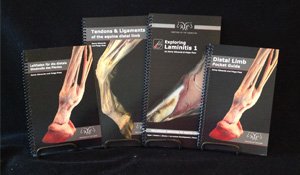
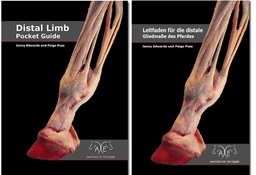 With the help of our friends and colleagues, the Pocket Guide has been translated into German. Thank you Gunnar Schillig, Ariane Reaves, and Heike Jung, DVM!
With the help of our friends and colleagues, the Pocket Guide has been translated into German. Thank you Gunnar Schillig, Ariane Reaves, and Heike Jung, DVM!
